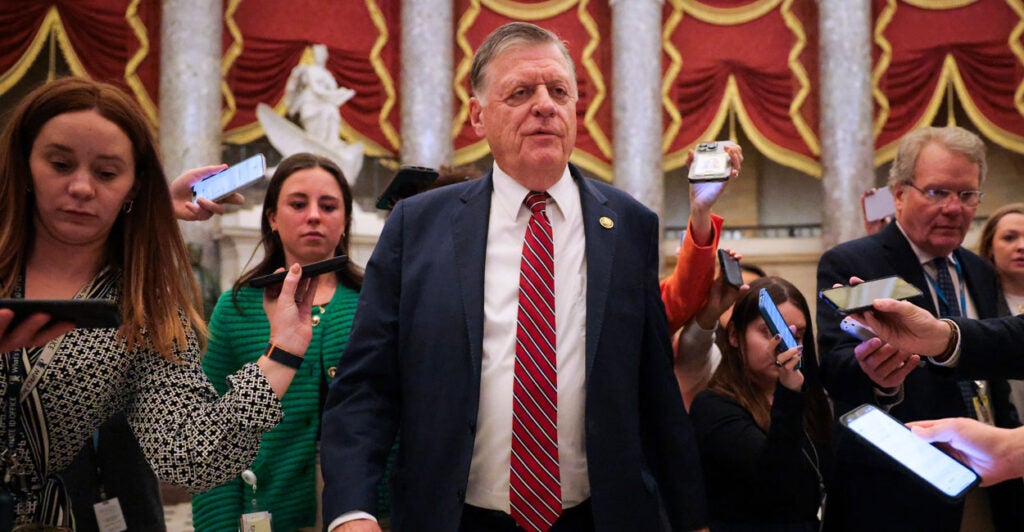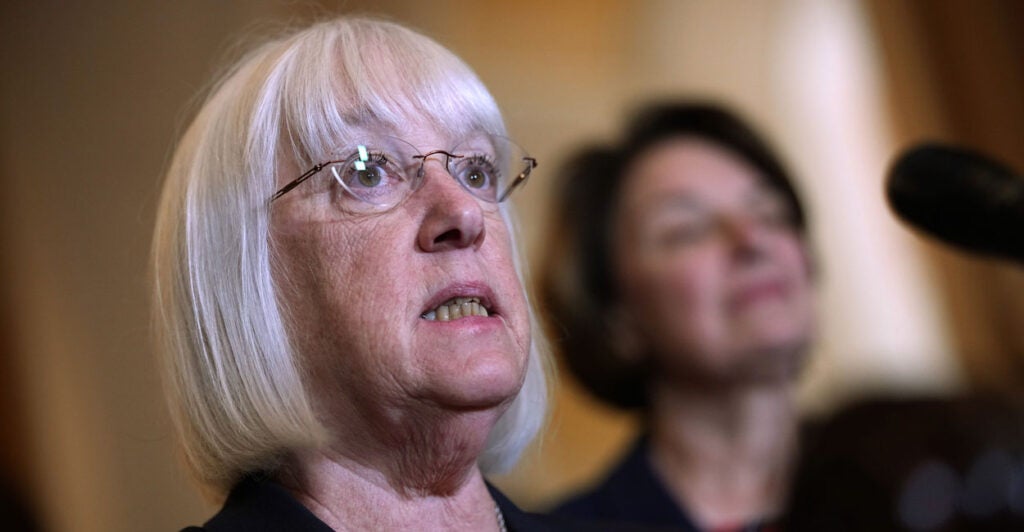ARTICLE AD BOX
Senators left Washington Thursday after another week of failing to reopen the government —ensuring that the federal government shutdown will go on for at least 34 days—one day short of the record.
By the time senators get back on Monday, there will be a mere 18 days left on the funding extension that Democrats have continually rejected. It was originally meant to provide seven weeks for appropriators in both chambers to hammer out funding agreements.
And the worst is yet to come. On Nov. 1, per announcements from the United States Department of Agriculture (USDA), Supplemental Nutrition Assistance Program (SNAP) benefits will be cut off, the first ever lapse of its kind for the food stamp program, which was formed in 1939.
Amid this partisan gridlock, it is unclear how Congress plans to get the government open. But, once the government is open, it’s just as unclear how Congress will continue to fund the government for the fiscal year. The choices at Congress’ disposal are the continuing resolution and the appropriations process.
Senate Majority Leader John Thune, R-S.D., met with top Republican appropriator Sen. Susan Collins, R-Maine, Thursday, telling reporters afterwards that Republicans will need a longer lasting continuing resolution (CR) to fund the government in order to buy time for appropriations.
“We’re going to need a longer date if we’re going to do [appropriations] bills,” Thune told reporters. Thune has warned of the risk of having to pass a long-term CR if Democrats do not work with Republicans.
Nevertheless, some appropriators in the House remain optimistic and say that if they end up needing a CR, it will not have to be long term..House appropriations chairman Tom Cole, R-Okla., for instance, wants to only have a short-term continuing resolution, insisting “There’s no reason why this needs to go much beyond the calendar year, if we started now.”
 Rep. Tom Cole, R-Okla. (Kayla Bartkowski/Getty Images)
Rep. Tom Cole, R-Okla. (Kayla Bartkowski/Getty Images)On Thursday, Rep. Riley Moore, R-W.V., a freshman member of the House appropriations committee, told The Daily Signal he was bullish on the process, and that negotiations have continued throughout the shutdown.
“If the Democrats want to step back from the abyss and actually reopen the government and pass that CR, we are ready to go forward and pass these appropriations bills,” Moore told The Daily Signal. “And we got an anchor for all of them to go through the minibus, probably [a] package, on all of them. So whenever the Democrats want to open back up, we’re ready to go.”
A minibus is a handful of funding bills that Congress votes on as a package. Republican leadership had intended to pass bills funding military construction and veteran affairs, agriculture, and the legislative branch in a package to be negotiated by both chambers.
In the Senate, Republicans have already attempted to move forward with additional appropriations bills during the shutdown, but with no success.
A defense funding bill, for example, failed in mid-October when all but three Senate Democrats voted against advancing it.Part of the difficulty is Democrats’ insistence on receiving health care concessions before the government can reopen.
 Sen. Patty Murray, D-Wash. (Kevin Dietsch/Getty Images)
Sen. Patty Murray, D-Wash. (Kevin Dietsch/Getty Images)Top Democrat appropriator Sen. Patty Murray, D-Wash., told reporters Thursday that she will not assist with passing appropriations bills until Republicans negotiate with Democrats.
“I’d love to see appropriations move, but the fact is, until the leaders meet and talk about getting a bipartisan CR and healthcare, we’re not going to be able to move.”
Murray’s remarks point to a major philosophical divide between Republican and Democrat leadership. Speaker of the House Mike Johnson, R-La., has repeatedly rejected the idea of the government being funded by backroom deals rather than by the larger body.
“That’s not how this works. I don’t operate that way,” Johnson said in a recent interview when asked about Democrats’ request for a meeting of leaders. “When I became speaker, I vowed to my colleagues that I would return to regular order, I would decentralize the speaker’s office, and it would not be a top-down, hoisted-upon-the-membership kind of program anymore. This is a member-driven, consensus-driven operation.”
What is more, Speaker Johnson is also warning that inserting Democrat demands into any spending agreement would not even be possible without buy-in from all members. The House has a large conservative faction opposed to extension of COVID-era subsidies that Democrats are demanding.
The founders “did not want four people to go into a backroom and make a deal,” Johnson said. “By the way, I couldn’t do that on something as complicated as extension of Obamacare COVID subsidies because we have to find the consensus. There’s a hundred different ideas on how to improve that.
What is at stake in this shutdown is nothing less than the future of the appropriations process, which Republican leaders have said they want to resurrect after years of leadership-crafted funding deals.
Some in the House, however, are growing more skeptical of the usefulness of attempting to achieve bipartisan negotiations with Democrats.
Rep. Chip Roy, R-Texas, for instance, is advocating a long-term continuing resolution to go through 2026, arguing that it would keep spending flat—a victory in Washington—and would leave room for further cuts to federal largesse.
Multiple members of the House Freedom Caucus have previously entertained this idea, which would be a change in direction for a Republican conference that has been attempting to resurrect the regular order appropriations process.
The post Will the Shutdown End with a Long-Term Funding Deal? appeared first on The Daily Signal.
.png)
 5 hours ago
1
5 hours ago
1








 English (US)
English (US)